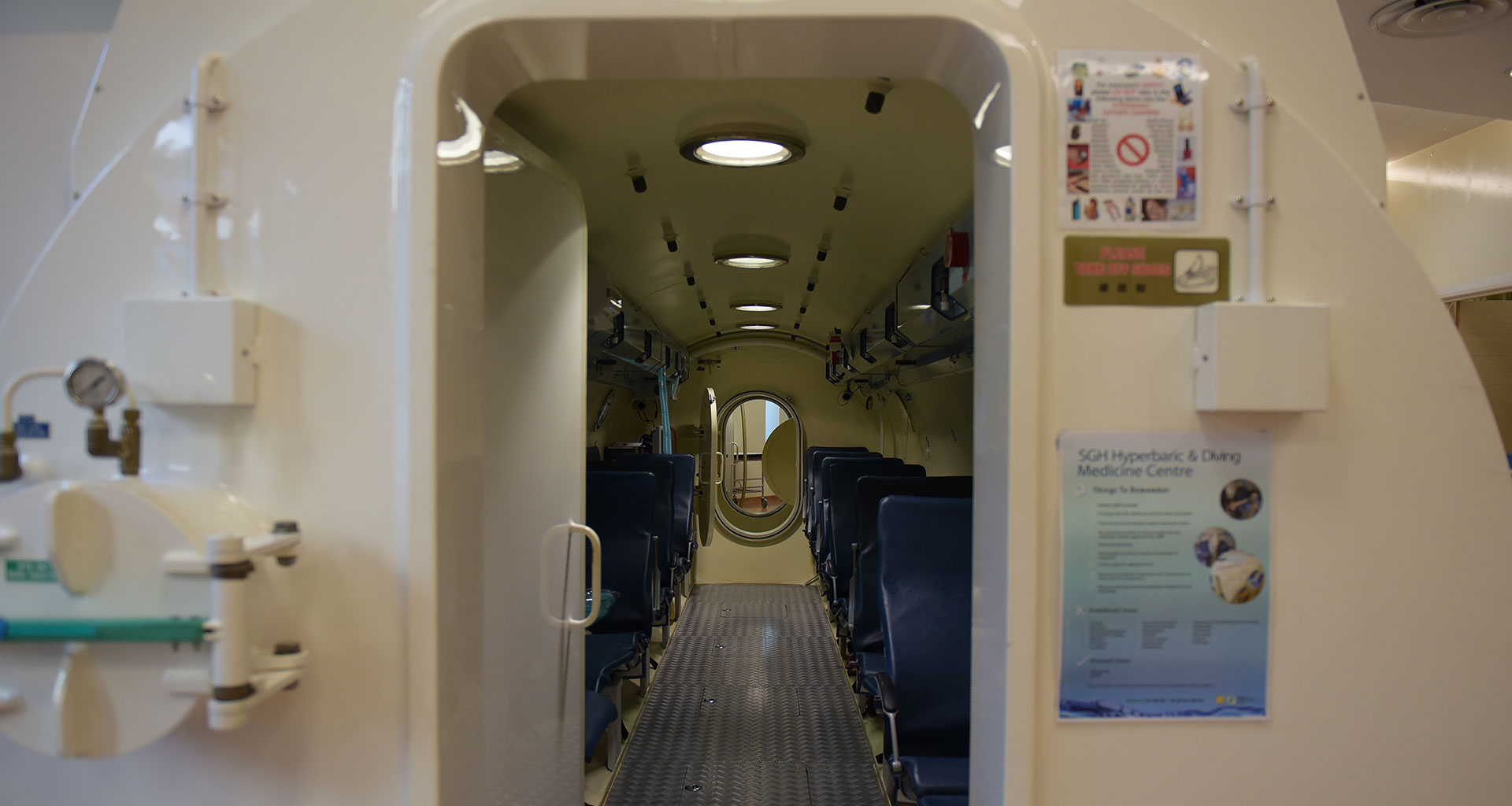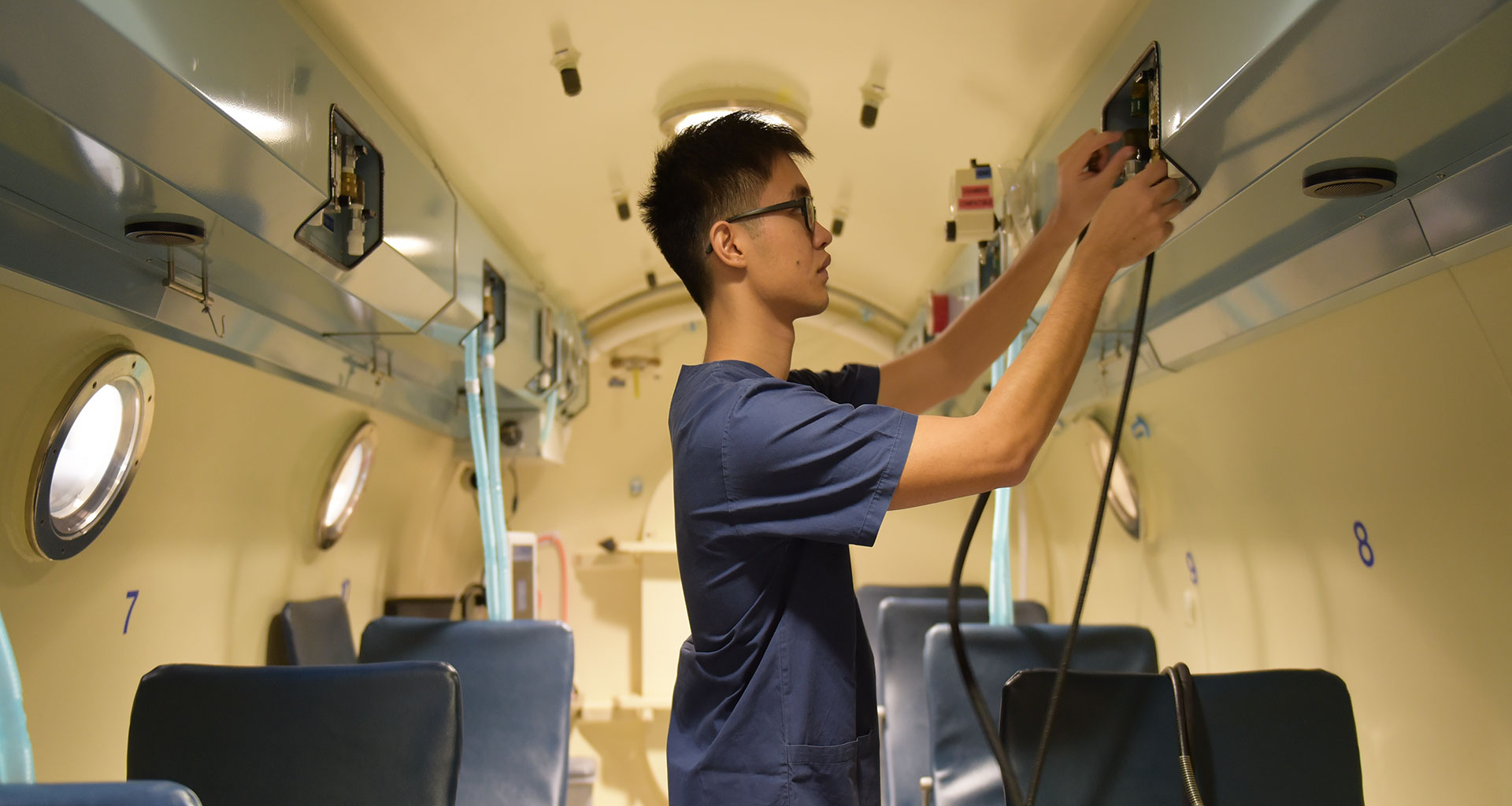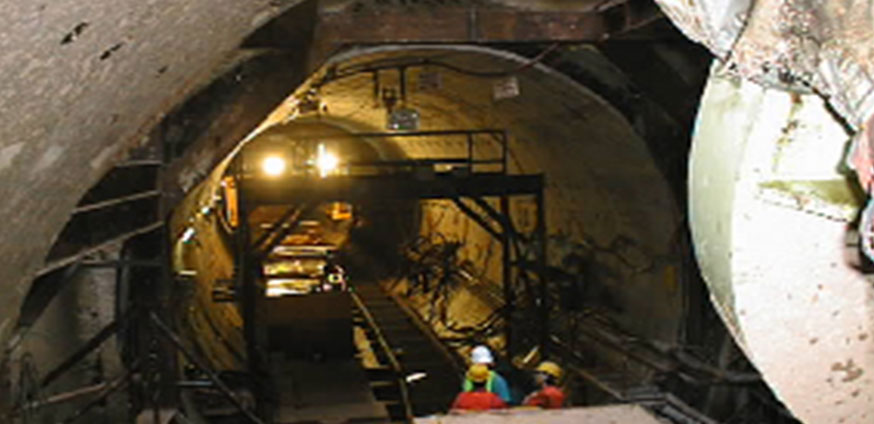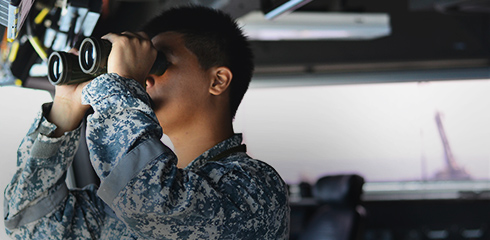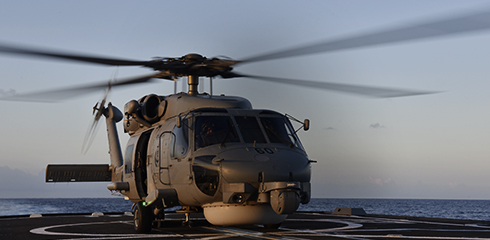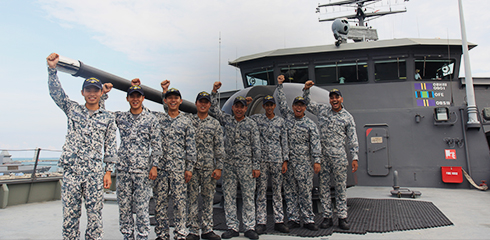It was a late-night work call anyone would dread. MAJ (Dr) Goh Jit Khong from the Navy Medical Service (NMS) was on duty when he received a call: a recreational diver had been struck with severe neurological decompression illness in Indonesia, and she was being flown in to Singapore General Hospital (SGH). The patient was on critical life support — she was unconscious and paralysed.
Upon arrival in Singapore, the patient was immediately transferred to the Hyperbaric and Diving Medicine Centre (HDMC). In collaboration with SGH, the NMS has a hyperbaric medicine team on 24-hour standby for emergency situations such as this — and on that night in late 2017, MAJ (Dr) Goh was leading the HDMC medical team.
After three rounds of treatment by the medical team, the patient was awake — but paralysed. Emboldened by a never-give-up spirit, the NMS team persevered. “After the eighth treatment, she had improved enough to stand up and walk, which was nothing short of remarkable,” says MAJ (Dr) Goh. “That success was hugely gratifying.”
Serving Two Purposes: Doctors and Servicemen
The NMS is dedicated to two different creeds: of a healthcare professional, and of a Navy sailor. For our Navy doctors and medics, these creeds are united by one common desire to serve our nation.
Set up in 1971, the NMS not only provides medical support for servicemen, but is also a lifesaver in peacetime, giving specialised medical expertise to fellow citizens in need. In the 1980s, when Singapore was constructing her first mass rapid transit (MRT) tunnels, the NMS provided on-the-ground hyperbaric medical support for the tunnel workers.
The success of NMS’s earlier civilian endeavours morphed into a collaboration with SGH in the late 2000s, to set up the HDMC. Jointly run by NMS and SGH medical professionals, the HDMC is equipped with a “multiplace” hyperbaric chamber, capable of treating over 20 patients at once. They treat two to three emergency cases per month.
Its location in Singapore’s largest hospital means that even more Singaporeans now benefit from hyperbaric treatment. “[Besides decompression illness], the hyperbaric oxygen can [also] be used to effectively treat clinical patients with problematic diabetic wounds, or those with carbon monoxide poisoning,” says COL (Dr) Chow Weien, Chief Naval Medical Officer.
Besides this important role in the civilian healthcare system, the NMS also provides underwater medicine support for the whole Republic of Singapore Navy (RSN) and larger Singapore Armed Forces (SAF). COL (Dr) Chow explains: “Underwater medicine covers not just diving medicine and hyperbaric medicine, but also submarine medicine. These are the three areas in which we have to develop our capabilities to support the SAF. [We also] provide this expertise to the nation and region.”
Healing on Home Ground
For every individual in the NMS, the successful recovery of their patients — military or civilian — is a powerful reminder of why they serve every day.
Navy medic CPL Roy Teo was part of the emergency team activated to save a Singaporean diver’s life in October 2017. “When she arrived at the facility, she was unconscious, with multiple monitoring probes placed on her,” says CPL Teo.
As chamber attendant, CPL Teo assisted in the diver’s transfer into the hyperbaric chamber and in connecting the required oxygen supply. “By the eighth treatment, she was fully recovered and very thankful. There was great sense of accomplishment when I found out she had recovered. As the chamber attendant for all the treatments, I know that I played a small but significant role in her recovery.”
Asked about his motivation, he responds simply: “It is a privilege to serve the public and patients in SGH.”
But the team is always looking to stay sharp. “These encounters reaffirm the need for the NMS to continuously maintain our hyperbaric medical skills and be exposed to a larger patient pool by serving the wider public,” says MAJ (Dr) Goh. “By doing so, we can collectively increase our medical experience, better treat naval personnel and, most importantly, in peacetime actively contribute to the national healthcare system and beyond.”
“At the beginning, the NMS was set up to provide support to the Naval Diving Unit,” recounts COL (RET) (Dr) Jimmy How, the RSN’s first Chief Naval Medical Officer. “Because of two national needs, the scope of the NMS soon expanded beyond the Navy. The first is the need to treat Singaporean and foreign divers suffering from decompression illness, while the second need is to provide medical cover and conduct training and safety clearances for compressed air workers at tunnel construction sites.”
COL (RET) (Dr) How should know best. After all, he was involved in NMS’s crucial role in supporting construction of the MRT system in the ‘80s and ‘90s. Digging deep tunnels requires pressurised air and, like divers, workers in high-air-pressure environments risk lethal decompression sickness if they do not decompress adequately.
Armed with the know-how to keep naval crews safe in tough underwater situations, the NMS developed safety guidelines, gave training and conducted screenings to provide workers with the safest working conditions possible. Stationed at MRT worksites, NMS crew promptly treated workers who showed symptoms of decompression sickness — such as joint pain — in RSN’s portable hyperbaric oxygen therapy chambers. Without treatment, many workers would have suffered excruciating pain, become permanently paralysed or even died from decompression illness.
“We had to climb up and down the tunnels, but it was an eye-opening experience,” recalls COL (RET) (Dr) How. “With this experience of being involved in the early MRT projects, we had the opportunity to do research on decompression illness and publish findings in the Singapore Medical Journal.”
Building a wealth of expertise over two decades allowed the NMS to effectively pass on their knowledge to the private sector. By the end of the 1990s, civilian contractors were able to provide hyperbaric medical support, and the NMS had taken on an advisory role. “Refocusing to train civilian contractors to do what we’ve been doing allows us to keep serving the rest of Singapore while giving us the capacity and resources to advance other areas of naval medicine,” said COL (Dr) Chow Weien, current Chief Naval Medical Officer of the NMS.


